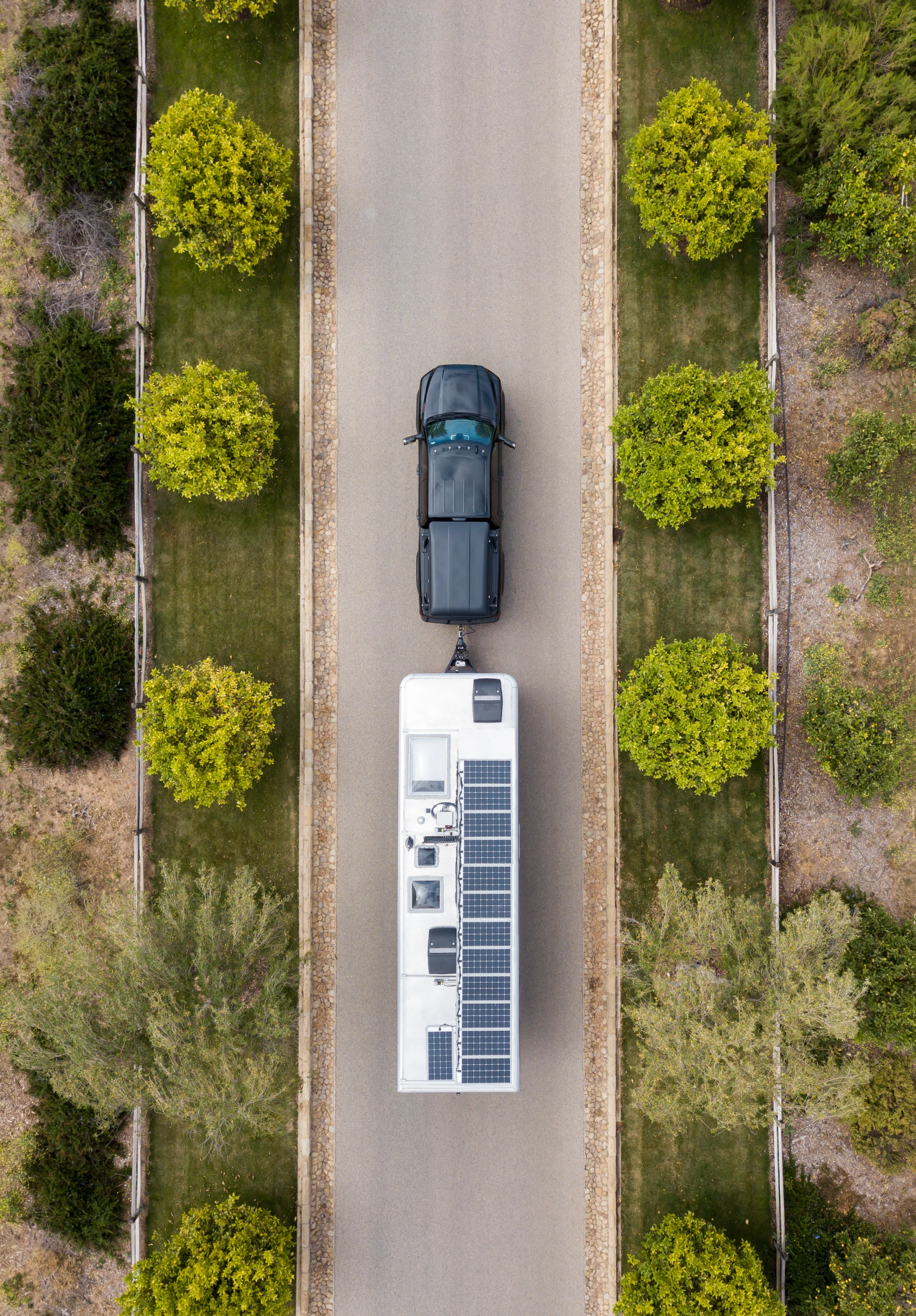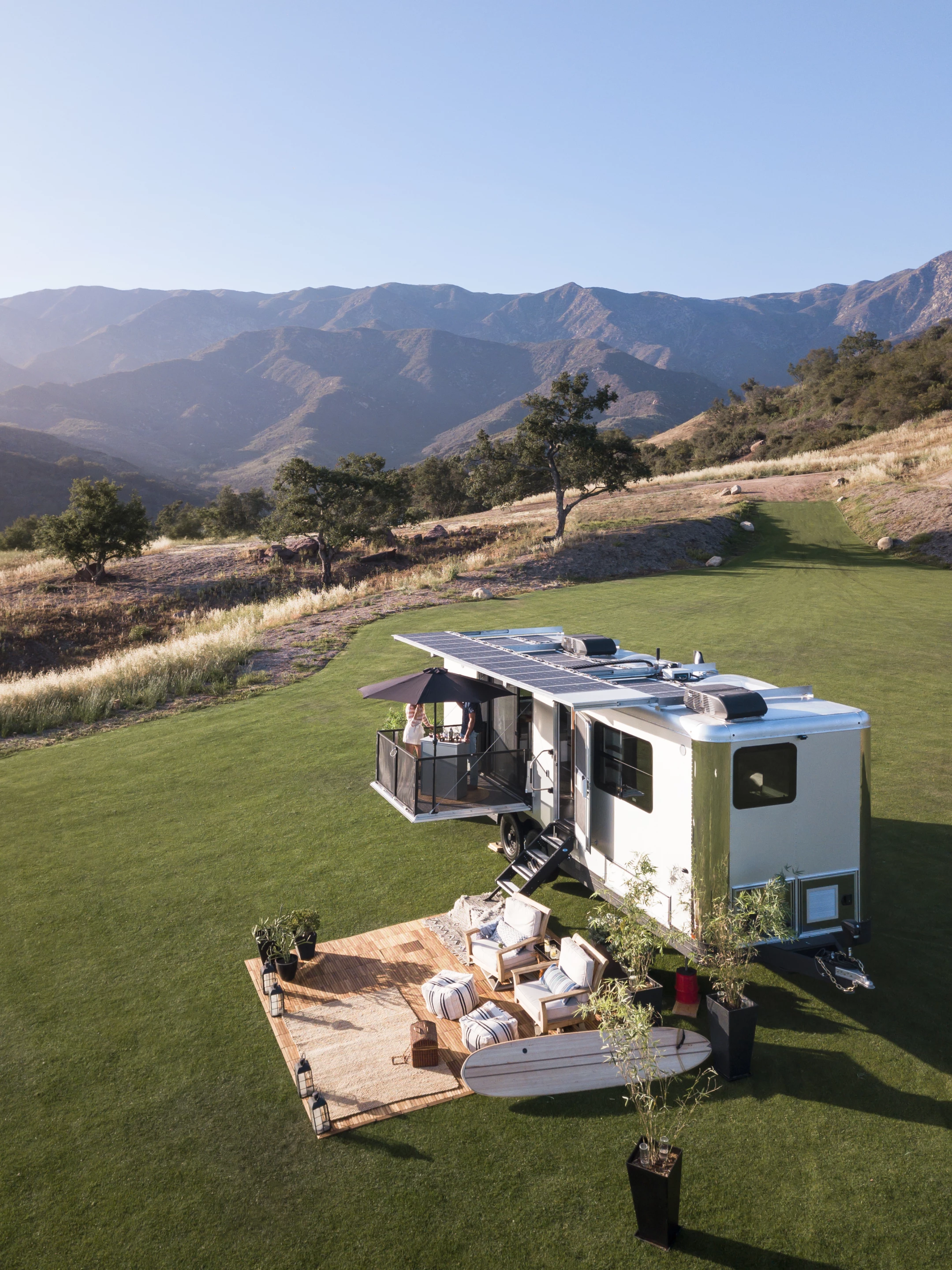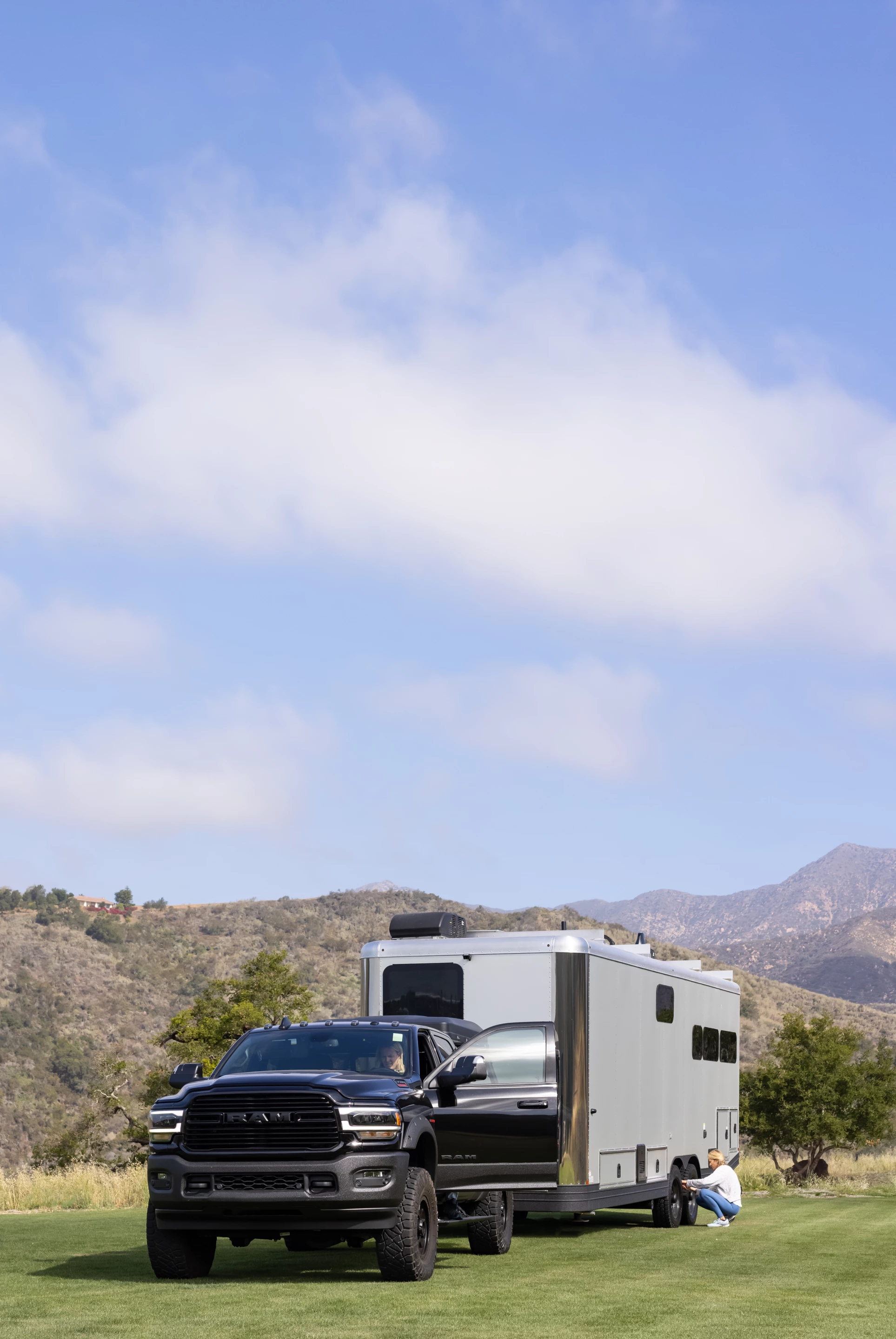Californian outfit Living Vehicle has rolled out the latest version of its travel trailer designed both for short-term trips and long-term getaways, kitted out with upgraded energy systems to push the boundaries of off-grid living. Available in four variants, the flagship model goes big on solar to enable charging of electric vehicles out in the wild, opening up some exciting possibilities for extended, remote adventures.
Living Vehicle first caught our eye back in 2017 with a shimmering aluminum-shelled trailer designed for off-grid living, and again with its 2020 version resembling a luxury mini-apartment, also wrapped in 100 percent aluminum. Similarly, the 2022 model wears an anodized aluminum skin said to be three times harder than standard aluminum to protect against aging, chipping and peeling.

Inside, there is 232 sq-ft (21.5 sq-m) of floorspace spread out across across a kitchen with a three-burner oven and all-electric solar fridge, bathroom with a rainfall shower, and a sleeping quarters with queen-sized bed and skylight for stargazing, which can also convert into a mobile office space.
Generous windows, skylights and sliding glass doors feature throughout for views of the surroundings from wherever the Living Vehicle is parked. A deck that can be lowered via a single button push also offers a chance to enjoy the outdoors in comfort, and can be easily raised up against the side of the trailer again when it's time to hit the road.

Like its predecessors, the Living Vehicle 2022 is designed to be capable of extended off-grid living, with a 100-gal (378-L) freshwater tank, 80 lb (36 kg) of propane, and a compost toilet. There are also waterproof and scratch-resistant floors to protect against damage from furry friends, and even a dedicated pet food area in a hallway cupboard.
Powering the whole operation on the flagship PRO-EV model is an upgraded energy system with new solar panels totaling 3,520 W that feed a 57.6-kWh storage system. This works with a 20-kW hybrid inverter to offer electric vehicle charging capabilities via an integrated 240-V charging station.

"Mobile living is a thrill all its own and one that is right for the times," says Living Vehicle co-founder Joanna Hofmann. "With our new 2022 Living Vehicle, owners have everything they need to discover the wonders that wait around the next bend, and enjoy them in luxury and style."
Sitting beneath the PRO-EV in the lineup are three other models with less powerful energy systems, all of which can be customized with bespoke energy upgrades, in addition to optional features like home theaters, mobile connectivity, hi-fi audio and remote security. Pricing for the entry-level CORE model starts at US$250,000, while the top-of-the-line PROV-EV will cost somewhere beyond $500,000, depending on options. Those looking to order a custom-made Living Vehicle for themselves can expect a 10 to12 month lead time.
Source: Living Vehicle









